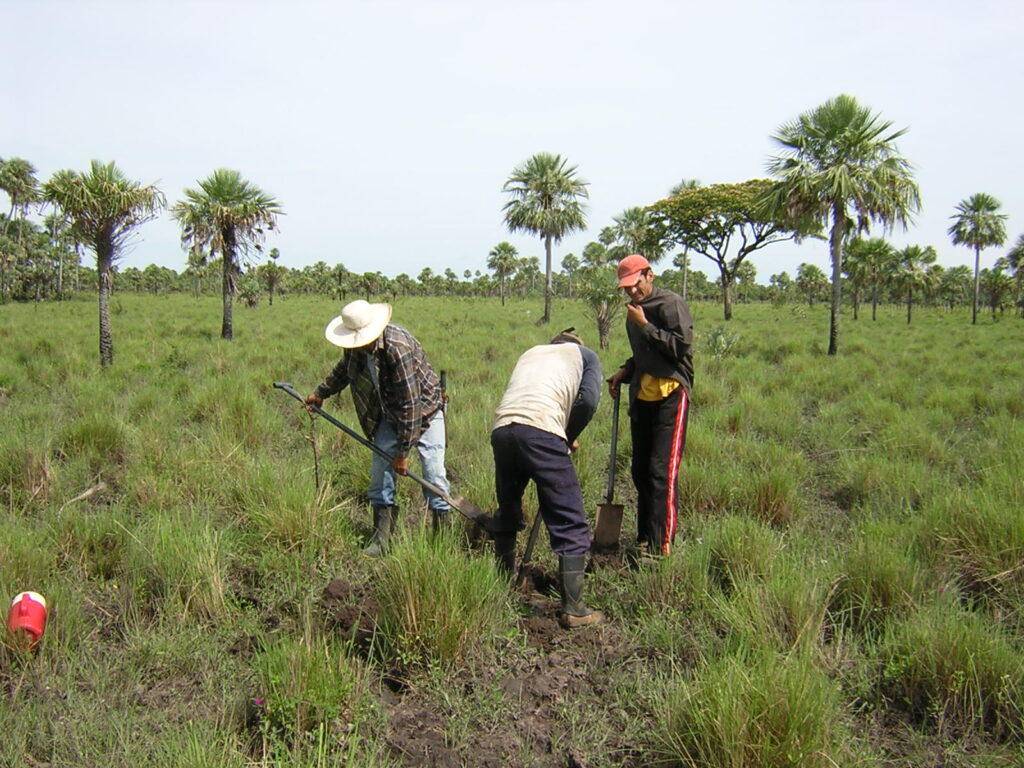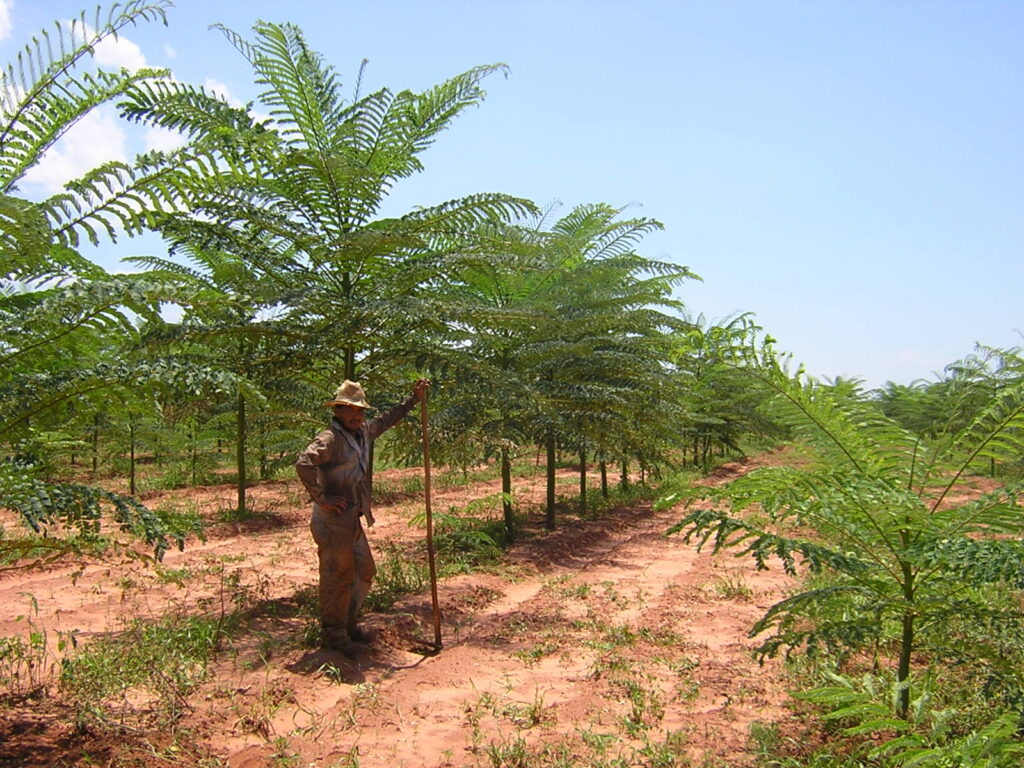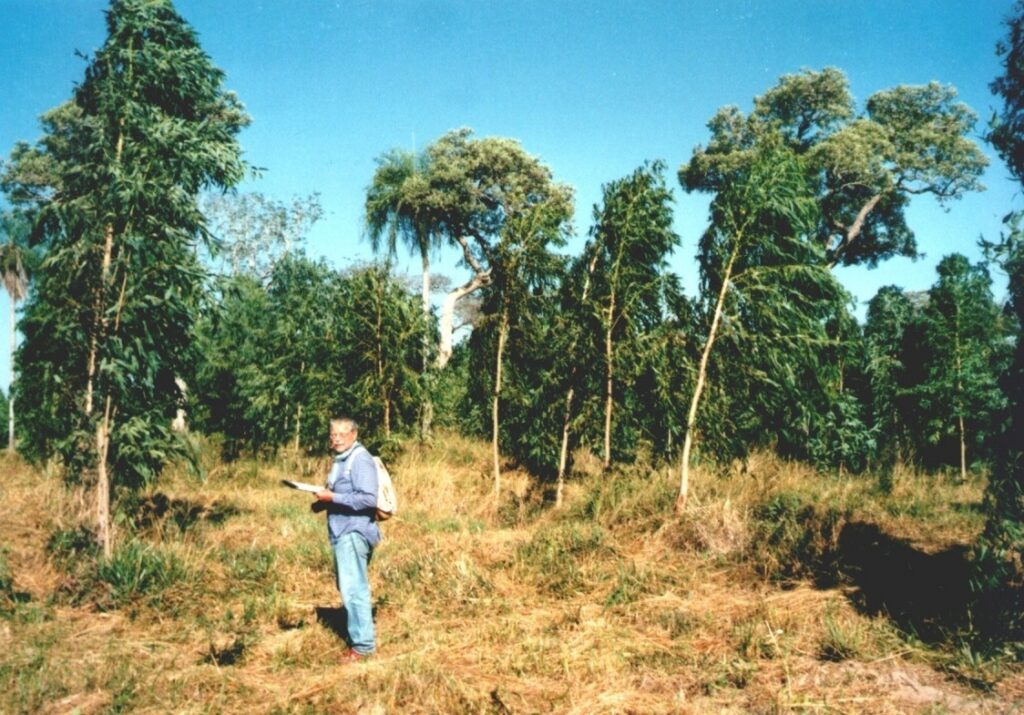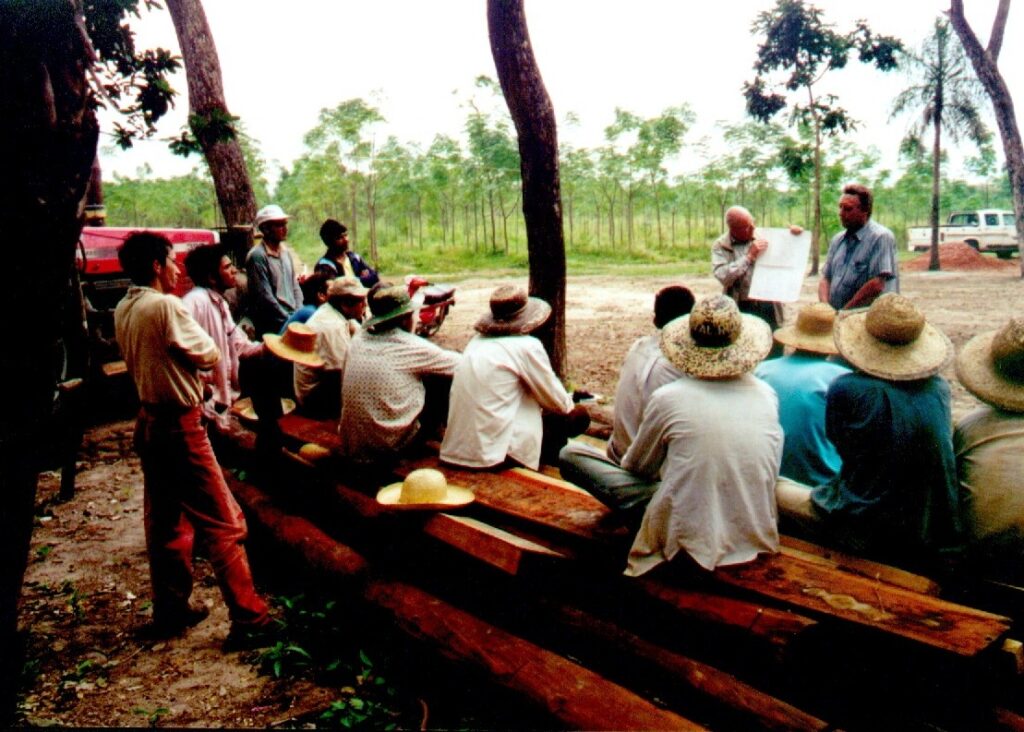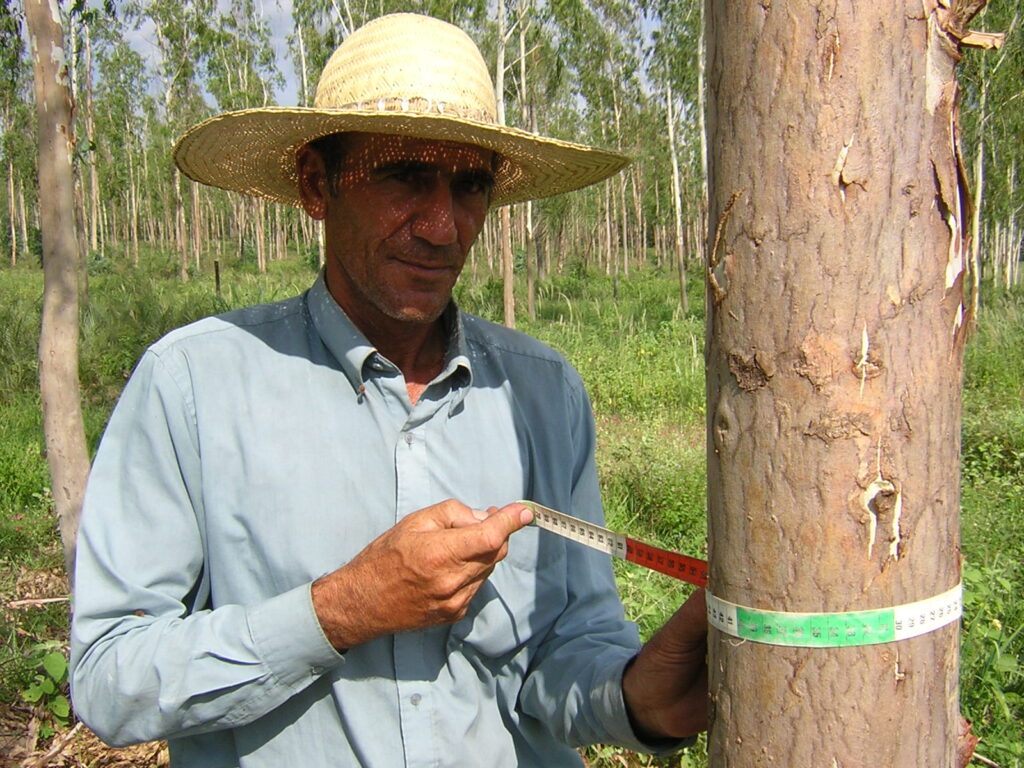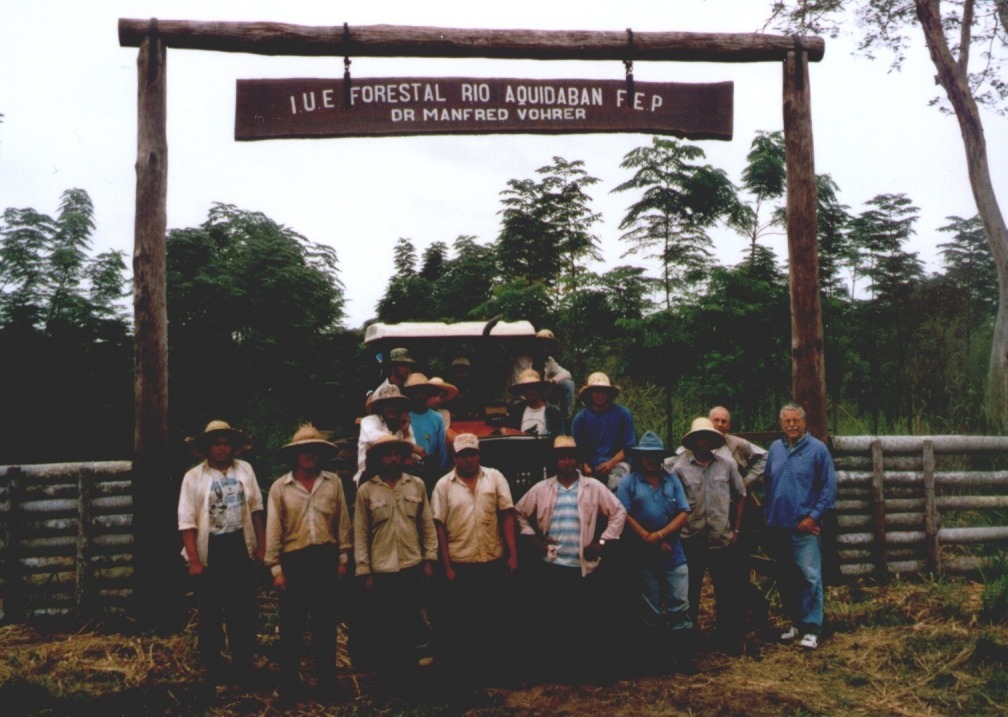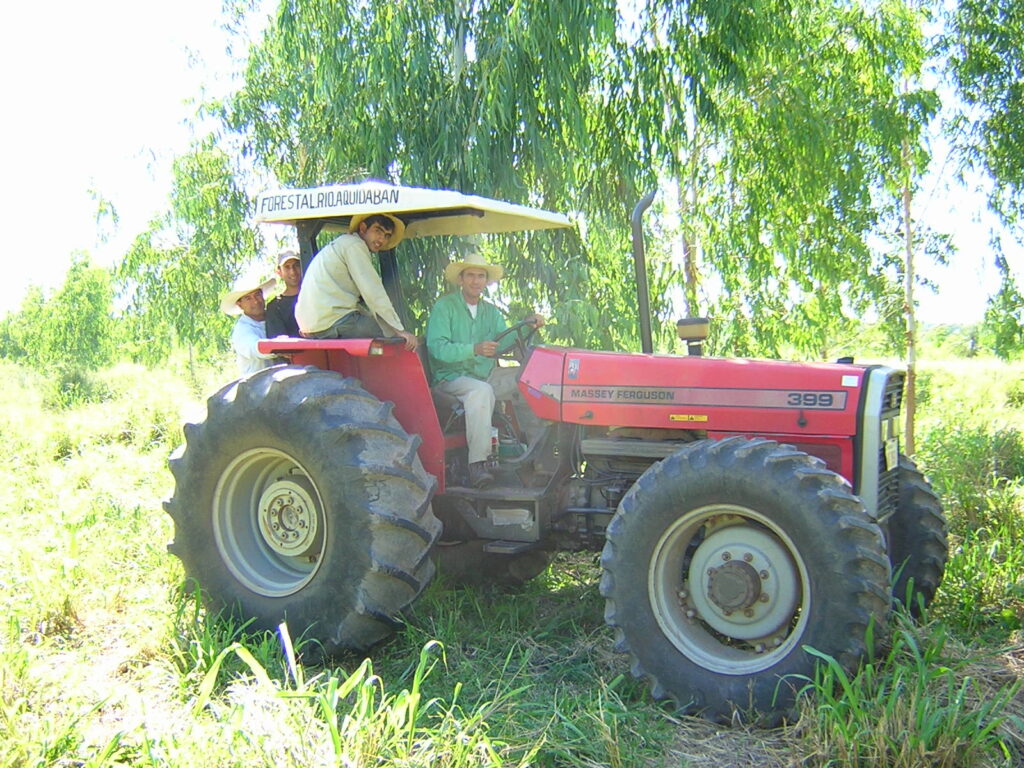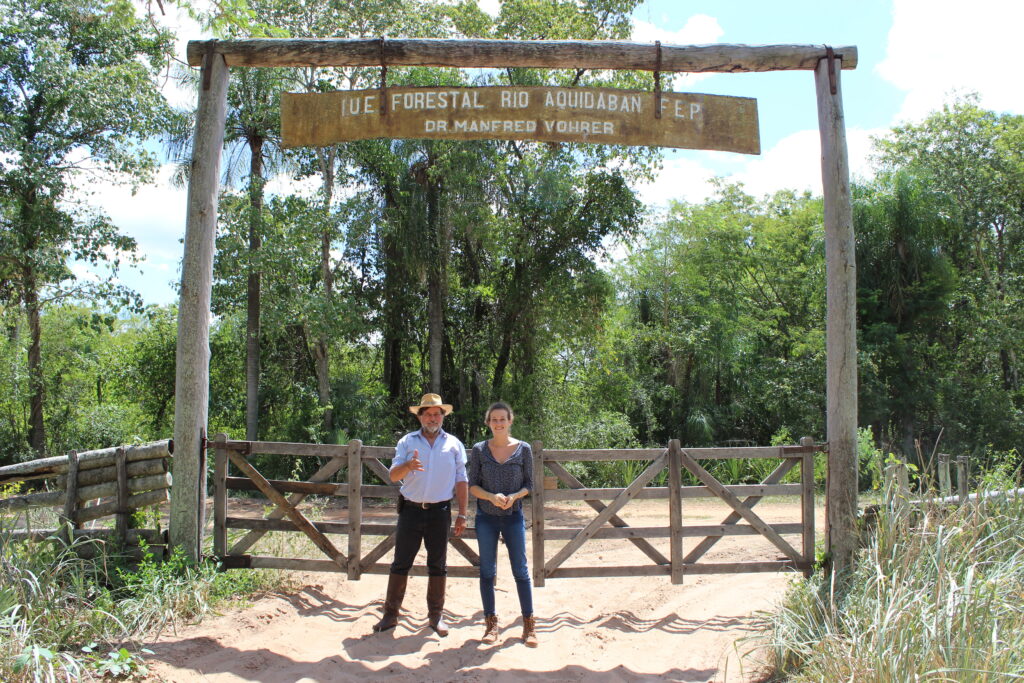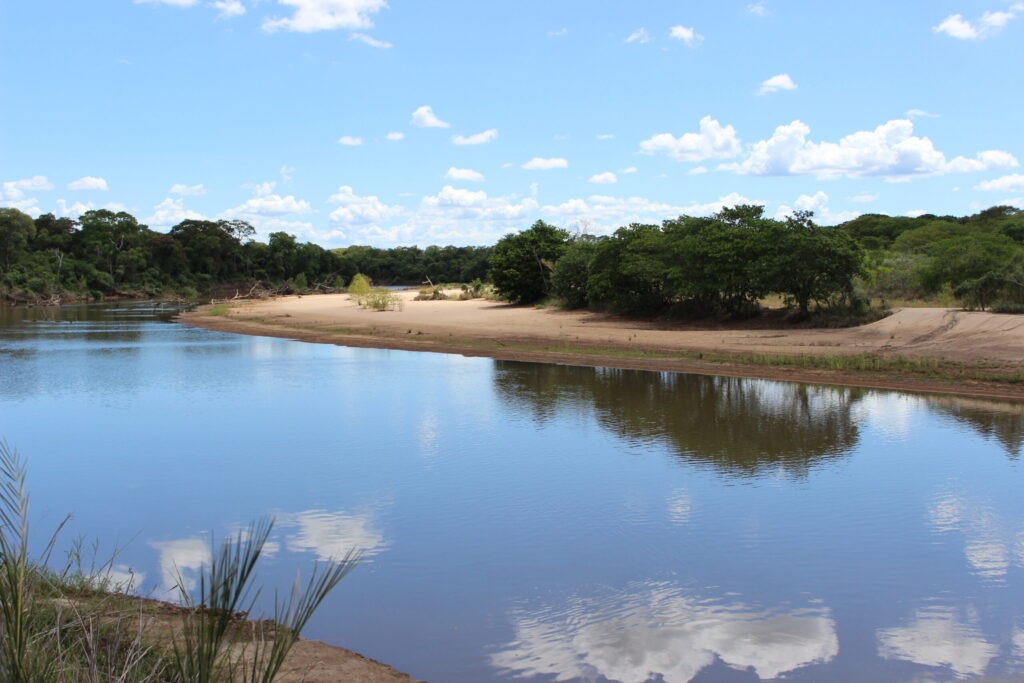Forestal RioAquidaban

The project
The reforestation project Forestal RioAquidaban is located in northeastern Paraguay, and covers an area of more than 300 hectares. It combines reforestation with extensive sustainable cattle farming. This so-called silvopastoral agroforestry system promotes sustainable and effective land use in harmony with nature. It is carried out in cooperation with a local cattle farmer family.
Project Start 1999
Certification according to
ISO 14064 (in progress)
Impact
The project is located in the San Pedro Region, which experienced high rates of deforestation due to the conversion of forest to farmland. Agriculture is more profitable for farmers, but decreases carbon sequestration and biodiversity. The reforestation measures stop the expansion of degraded land, improve soil quality, promote biodiversity, and store more than 370,000 tons of CO2 during the lifetime of the project.
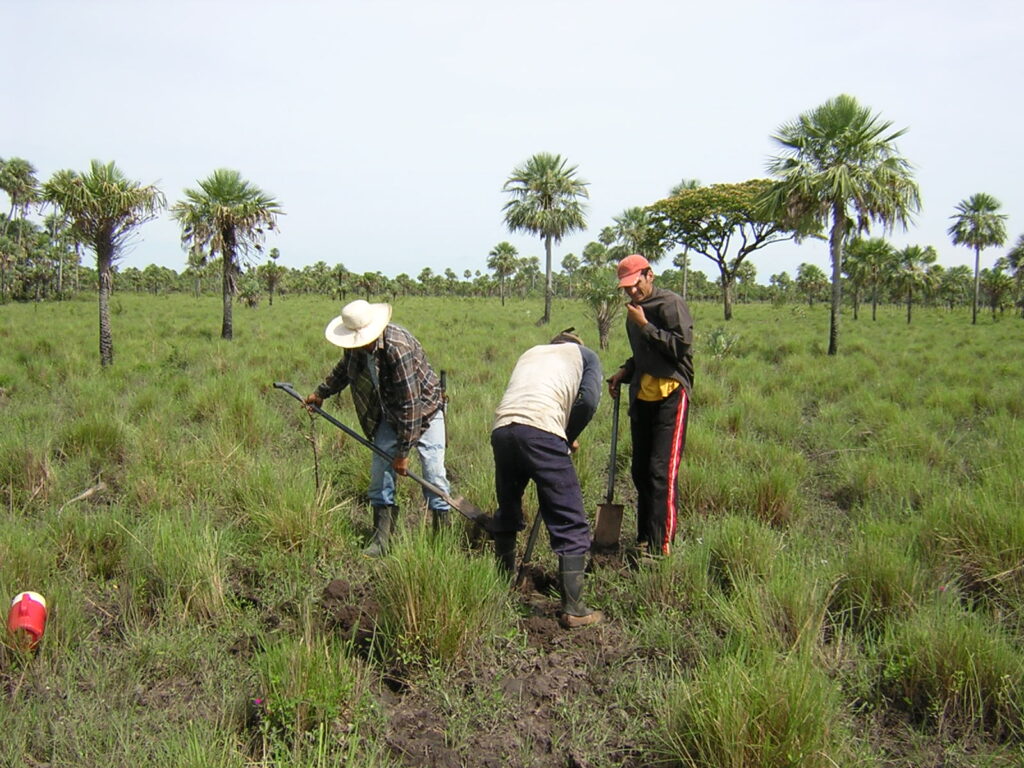
Climate
Biodiversity
Economy & People
By the end of 2000, over 300 hectares of forest had been planted in the project area, contributing to the sequestration of more than 200,000 tons of CO₂. This reforestation initiative not only aids in carbon capture but also fosters the generation of humus, leading to an increase in soil carbon content. Additionally, the presence of these trees increases evaporation that promotes a beneficial microclimate.
The northeastern region of Paraguay is home to diverse wildlife, including species such as jaguars, tapirs, anacondas, as well as several hundred species of birds. Deforestation, primarily driven by the conversion of forest into agricultural land, poses a substantial threat to the habitat and habitat connectivity of those species. Intensive farming compromises the soil quality, hindering the natural regeneration potential of the land, even if land management ceases. Our reforestation measures strategically intervene to address this issue, establishing a vegetation of high-value timber. This first generation vegetation provides shade and increases soil quality, which, in turn, facilitates the establishment of natural secondary vegetation in subsequent cycles, contributing to the long-term ecological sustainability of the region.
The cultivation of trees together with cattle creates synergies that benefit both nature and people: The trees provide sun protection and increase livestock welfare, while the cows suppress weed and fertilise the soil. This promotes nutrient cycling in the ecosystem and fosters tree growth. The farmers benefit from a diversification of their income streams, making them more resilient to external shocks, such as fluctuating wood prices.
Gallery
Gallery
Location
Conception, Paraguay


